Low-Cost Satellite Launch System—Aerodynamic Feasibility Study
Abstract
:1. Introduction
2. Materials and Methods
2.1. Development of Aircraft CAD Model Using Reverse Engineering Methods
2.2. Basic Information on the Applied Method for Determining the Aerodynamic Loads
- A Navier–Stokes equation (equation of momentum conservation) in the following form:
- p—static pressure;
- and are, respectively, gravitational forces and external forces, e.g., increasing as a result of flow through a dispersed phase;
- —stress tensor.
- —kinematic viscosity;
- I—unit matrix.
- The equation of flow continuity (mass conservation equation in relation to fluid treated as a continuous medium) in the form:
- Sm—mass source (e.g., as a result of evaporation of the dispersed phase).
- The energy conservation equation in the form:
- k—thermal conductivity;
- E—total energy;
- —shear stress tensor.
2.3. Coordinate Systems and Determination of Force and Aerodynamic Moment Components
- −
- the origin of the system lies in the center of mass of the aircraft—point O;
- −
- the Oxz plane is the plane of geometrical, mass and aerodynamic symmetry of the aircraft;
- −
- the longitudinal axis Ox lies in the plane of symmetry of the aircraft and constitutes the main axis of inertia of the aircraft and is directed towards its nose;
- −
- the lateral axis Oy is perpendicular to the plane of symmetry and is directed towards the right wing;
- −
- the Oz axis lies in the plane of symmetry of the aircraft and is directed towards the bottom surface of the fuselage.
- −
- the origin of the system lies in the center of mass of the aircraft—point O;
- −
- the longitudinal axis OxA is directed along the vector V of the airplane velocity relative to the air;
- −
- the OzA axis lies in the plane of symmetry of the aircraft and is directed towards the bottom surface of the fuselage;
- −
- the OyA axis is directed towards the right wing so that the system is right-handed.
- −
- the angle of attack α is the angle between the projection of the velocity vector V on the aircraft plane of symmetry Oxz and the aircraft longitudinal axis Ox;
- −
- the angle of bank β is the angle between the velocity vector V and the aircraft plane of symmetry Oxz.
- −
- drag force coefficient
- −
- side force coefficient
- −
- lift force coefficient
- −
- rolling moment coefficient
- −
- pitching moment coefficient
- −
- yawing moment coefficient
- FD—drag force [N];
- FY—side force [N];
- FL—lift force [N];
- L—rolling moment [Nm];
- M—pitching moment [Nm];
- N—yawing moment [Nm];
- —undisturbed air density [kg/m3];
- —undisturbed air flow velocity magnitude [m/s];S—wing area [m2];
- b—wingspan [m];
- MAC—mean aerodynamic chord [m];
2.4. Development of Aircraft and Rocket Numerical Models for CFD Analysis
- PZA—aerodynamic lift force;
- i—index number of actual mesh;
- final—index number of largest mesh.
- −
- symmetry of the flow field;
- −
- symmetry of geometry;
- −
- the flow is stationary and stable, i.e., there is neither a Karman vortex trail behind the airframe, nor any other non-stationary structure in the flow;
- −
- the flight conditions correspond to zero altitude (at sea level), according to the reference atmosphere: pressure P = 101,325 Pa, temperature T = 288.15 K and air density ρ = 1.225 kg/m3.
3. Results and Discussion
3.1. Quantitative Results
3.2. Qualitative Results
3.3. Analysis of the Impact of Structural Parts of the Aircraft with Space Rocket on the Obtained Aerodynamic Characteristics
4. Conclusions
- −
- The presence of the carried space rocket does not significantly affect the flow field on or around the aircraft and does not cause any degeneration of vortices generated by the leading edge’s extension;
- −
- The impact of the space rocket on the change in aerodynamic characteristics of the carrier aircraft is negligible;
- −
- The space rocket was correctly positioned relative to the airframe of the carrier aircraft;
- −
- The shape of the carrier aircraft’s fuselage in connection with the leading edge’s extension has a significant impact on the value of the critical angle of attack;
- −
- The influence of the leading edge’s extension on the aerodynamic characteristics of the aircraft was observed.
Author Contributions
Funding
Institutional Review Board Statement
Informed Consent Statement
Data Availability Statement
Conflicts of Interest
References
- Jones, H.W. The recent large reduction in space launch cost. In Proceedings of the 48th International Conference on Environmental Systems ICES-2018-81, Albuquerque, NM, USA, 8–12 July 2018; Available online: https://ttu-ir.tdl.org/bitstream/handle/2346/74082/ICES_2018_81.pdf?sequence=1&isAllowed=y (accessed on 1 March 2022).
- Almazrouei, A.; Khan, A.; Almesmari, A.; Albuainain, A.; Bushlaibi, A.; Al Mahmood, A.; Alqaraan, A.; Alhammadi, A.; AlBalooshi, A.; Khater, A.; et al. A Complete Mission Concept Design and Analysis of the Student-Led CubeSat Project: Light-1. Aerospace 2021, 8, 247. [Google Scholar] [CrossRef]
- Orbital, A.T.K. Pegasus User’s Guide; Orbital ATK: Dulles, VA, USA, 2015. [Google Scholar]
- Chen, T.; Ferguson, P.W.; Deamer, D.A.; Hensley, J. Responsive Air Lunch F-15 Global Strike Eagle. In Proceedings of the AIAA—Proceedings of 4th Responsive Space Conference, Los Angeles, CA, USA, 24–27 April 2006. [Google Scholar]
- Clarke, J.P.; Cerven, K.; March, J.; Olszewski, M.; Wheaton, B.; Williams, M.; Yu, J.; Selig, M.; Loth, E.; Burton, R. Conceptual Design of a Supersonic Air-launch System. In Proceedings of the 43rd AIAA/ASME/SAE/ASEE Joint Propulsion Conference & Exhibit AIAA, Cincinnati, OH, USA, 8–11 July 2007. [Google Scholar]
- Bartolotta, P.A. Horizontal Launch: Versatile Concept for Assured Space Access; NASA: Pasadena, CA, USA, 2011.
- DARPA. Report on Horizontal Launch Study; The Defense Advanced Research Projects Agency: Arlington, VA, USA, 2011.
- Kesteren, M.W. Air Launch versus Ground Launch: A Multidisciplinary Design Optimization Study of Expendable Launch Vehicles on Cost and Performance, Faculty of Aerospace Engineering; Delft University of Technology: Delft, The Netherlands, 2013. [Google Scholar]
- Niederstrasser, C. Small Launch Vehicles—A 2018 State of the Industry Survey. In Proceedings of the 32nd Annual AIAA/USU Conference on Small Satellites, Logan, UT, USA, 4–9 August 2018. [Google Scholar]
- Lopata, J.; Rutan, B. RASCAL: A Demonstration of Operationally Responsive Space Launch. In Proceedings of the AIAA-Proceedings of the 2nd Responsive Space Conference, San Diego, CA, USA, 28–30 September 2004. [Google Scholar]
- Smolyakov, A.V.; Yanakaev, V.A.; Kornev, A.V.; Shevko, S.V. “MARKS” Small Aviation-Rocket Space Launch System. J. Eng. Sci. Technol. 2018, 13, 1143–1152. [Google Scholar]
- Olejnik, A.; Dobrzyński, P.; Machowski, B.; Zalewski, P. Concept of Airborne Rocket System of Mini- and Micro-satellites Launching. Mechanik 2018, 7, 511–513. (In Polish) [Google Scholar]
- ANSYS. Fluent Theory Guide; Version 15.0; Ansys Inc.: Canonsburg, PA, USA, 2013. [Google Scholar]
- Tomaszewski, A.; Goraj, Z. Assessment of a small UAV speed polar graph by conducting flight tests. Aircr. Eng. Aerosp. Technol. 2018, 91, 1–8. [Google Scholar] [CrossRef]
- Górniak, C.; Goraj, Z.; Olszański, B. Research and selection of MALE wing profile. Aircr. Eng. Aerosp. Technol. 2018, 91, 264–271. [Google Scholar] [CrossRef]
- Klimczyk, W.A.; Goraj, Z. Analysis and optimization of morphing wing aerodynamics. Aircr. Eng. Aerosp. Technol. 2018, 91, 538–546. [Google Scholar] [CrossRef]
- Rodzewicz, M.; Goraj, Z.; Tomaszewski, A. Design and testing of three tailless unmanned aerial vehicle configurations built for surveillance in Antarctic environment. Proc. Instit. Mech. Eng. Part G—J. Aerosp. Eng. 2018, 232, 2598–2614. [Google Scholar] [CrossRef]
- Wojewodka, M.; White, C.; Shahpar, S.; Kontis, K. Numerical study of complex flow physics and coherent structures of the flow through a convoluted duct. Aerosp. Sci. Technol. 2022, 121, 107191, ISSN 1270-9638. [Google Scholar] [CrossRef]
- Olejnik, A.; Kiszkowiak, Ł.; Dziubiński, A. Aerodynamic modeling process using Reverse Engineering and Computational Fluid Dynamics. In Earth and Space 2018: Engineering for Extreme Environments; American Society of Civil Engineers: Reston, VA, USA, 2018; pp. 944–956. ISBN 9780784481899. [Google Scholar] [CrossRef]
- Olejnik, A.; Kachel, S.; Leszczyński, P.; Łącki, T. Development of MiG-29 Aircraft Geometric Model Based on Surface Scanning. Mechanik 2010, 7, 337–348. (In Polish) [Google Scholar]
- Hirsch, C.H. Numerical Computation of Internal and External Flows: The Fundamentals of Computational Fluid Dynamics, 2nd ed.; Butterworth-Heinemann: Woburn, MA, USA, 2007; ISBN 9780750665940. [Google Scholar]
- ANSYS ICEM CFD Tutorial Manual, Ansys ICEM CFD 15; ANSYS, Inc.: Canonsburg, PA, USA, 2013.
- PN-ISO 1151-1; Flight Dynamics: Constants and Symbols—Part 1: The Movement of Aircraft in Air. Polish Comittee for Standardisation: Warsaw, Poland, 2004. (In Polish)
- Sobieraj, W. Aerodynamics; Military University of Technology: Warsaw, Poland, 2014. (In Polish) [Google Scholar]
- Dziubiński, A.; Jaśkowski, P.; Seredyn, T. CFD Analysis of Agricultural Aircraft Aerodynamic Characteristics. Trans. Inst. Aviat. 2016, 4, 321–337. [Google Scholar] [CrossRef]
- Krzyżanowski, A.; Chlebny, B.; Wojciechowski, Z. Experimental Characteristics of a MiG-29 Aircraft Model with Strakes; Military University of Technology: Warsaw, Poland, 1994. (In Polish) [Google Scholar]

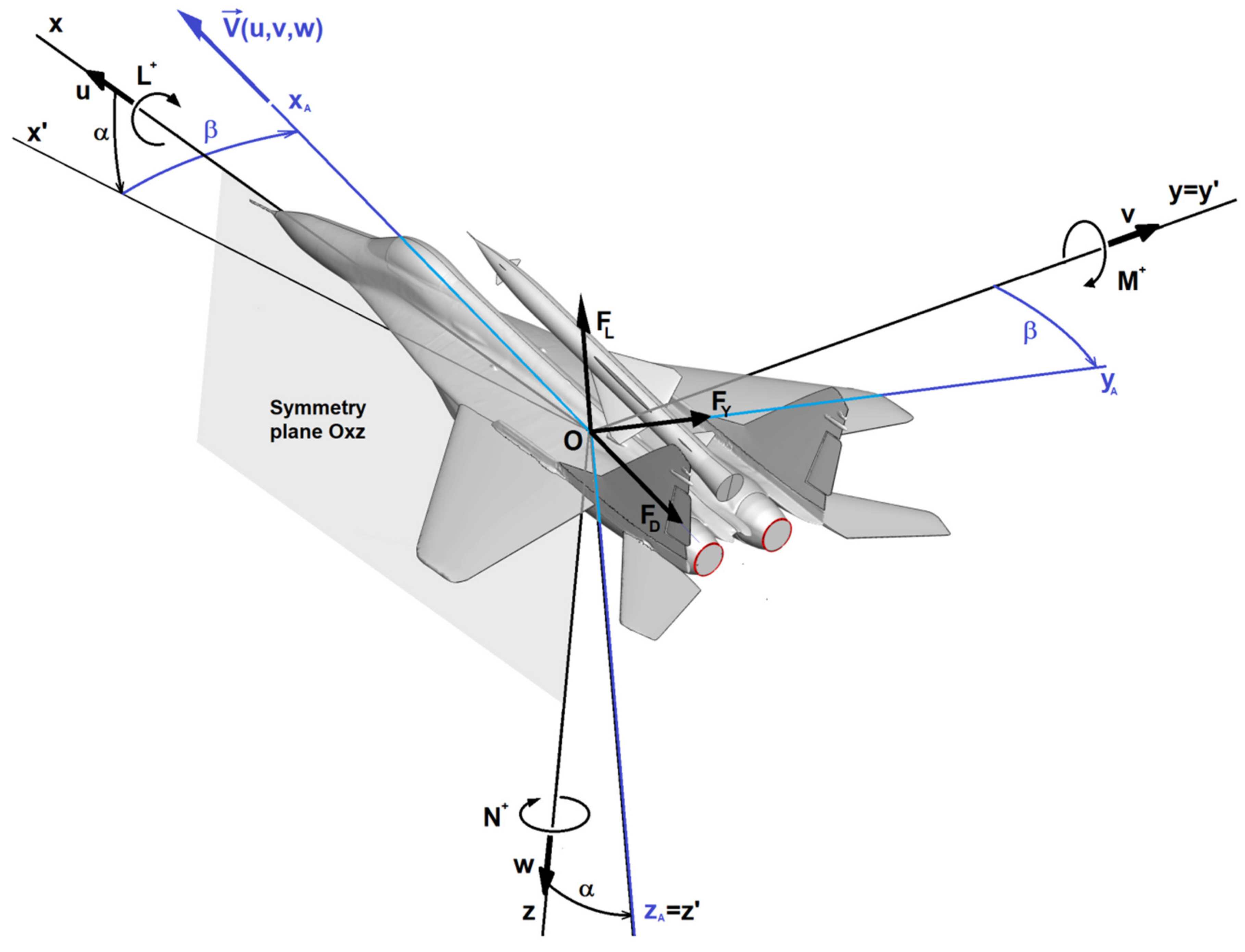
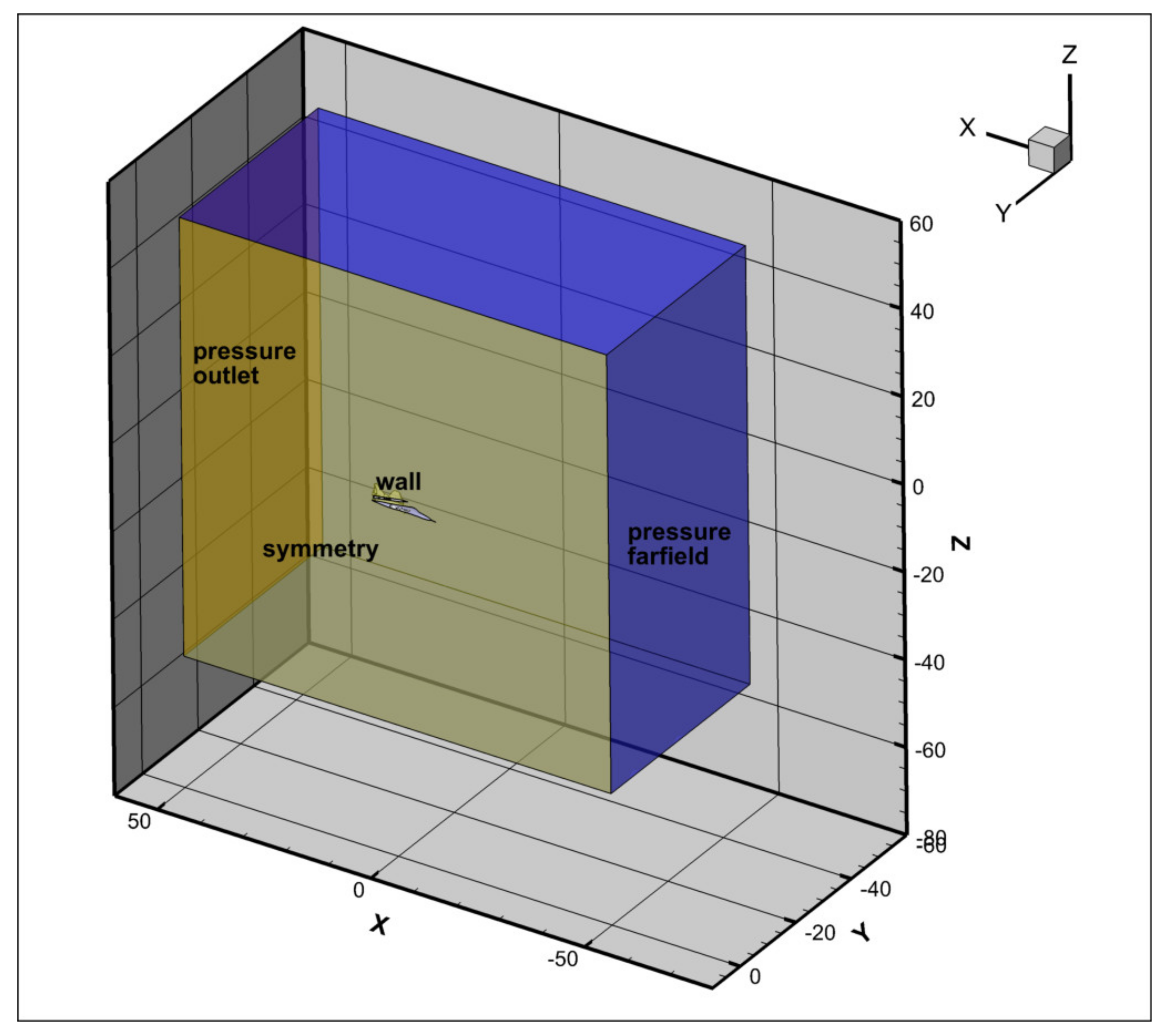
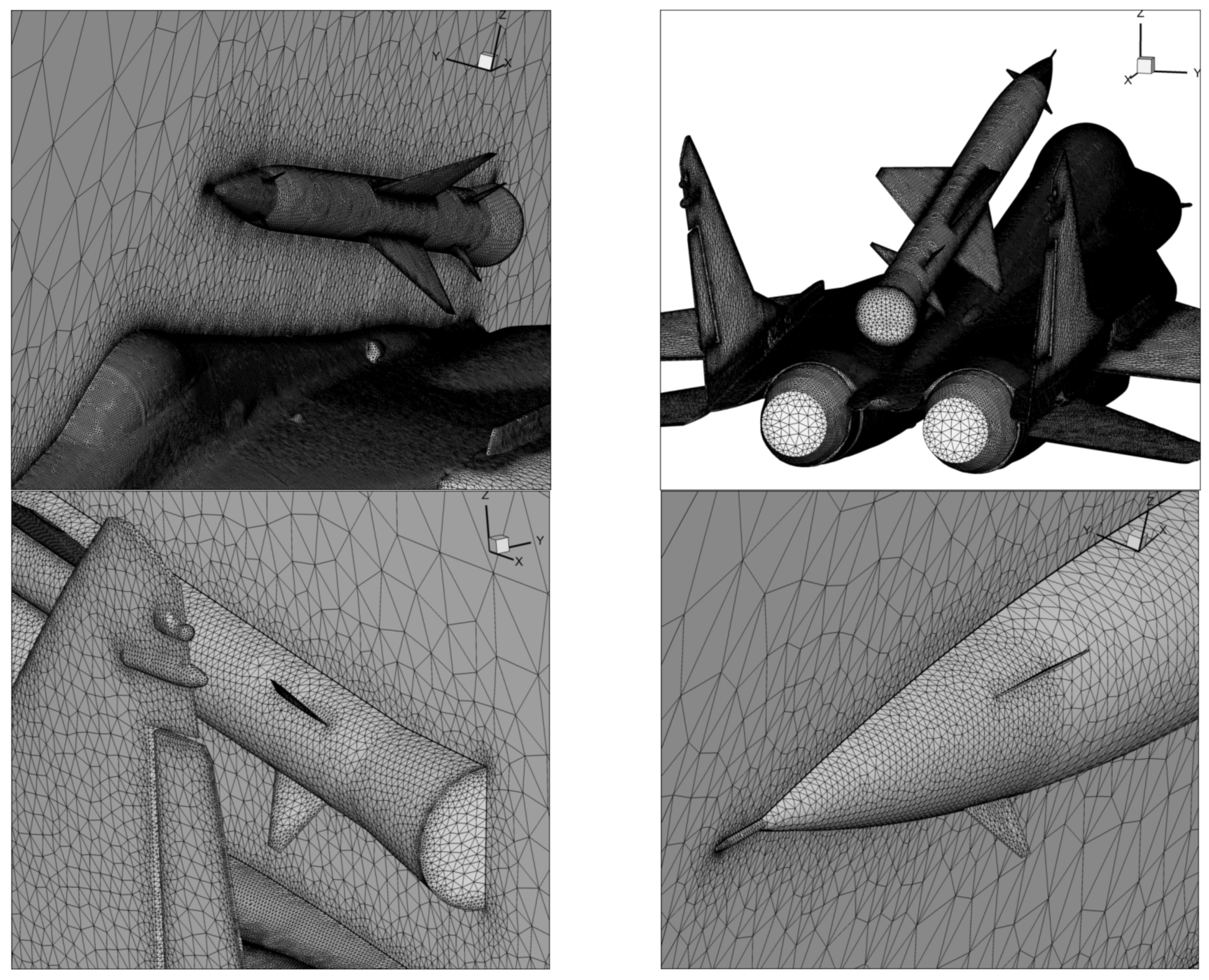

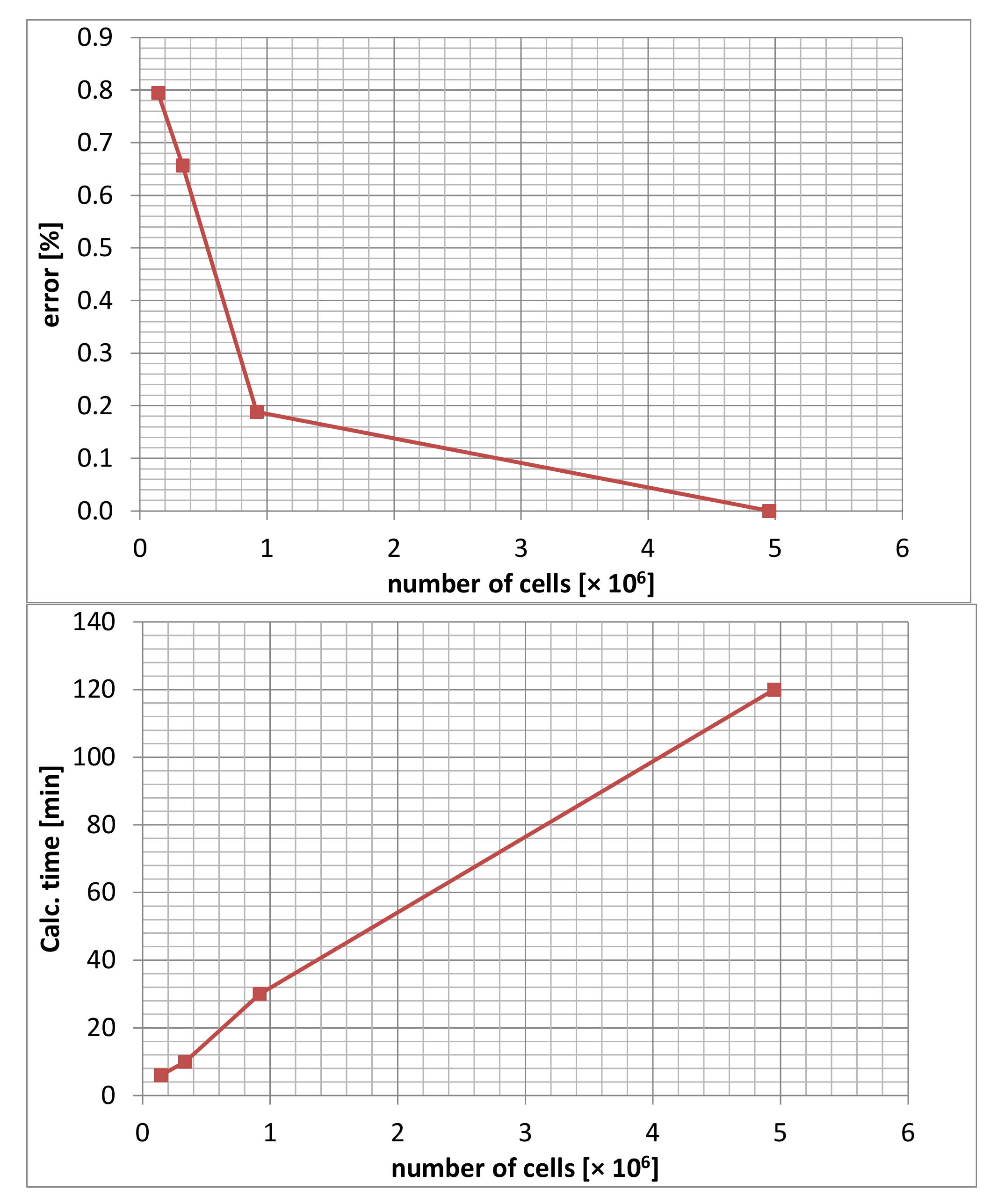
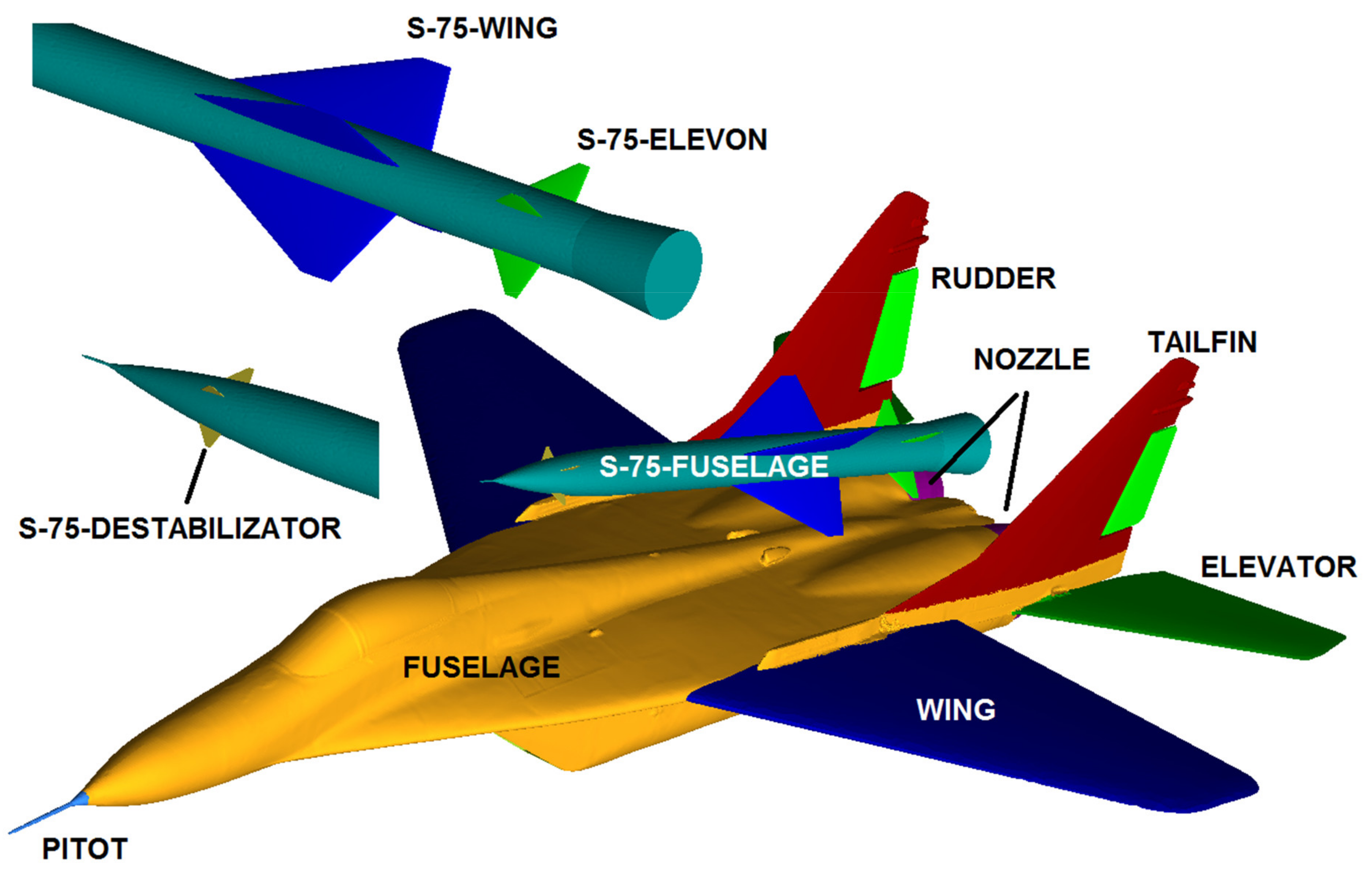

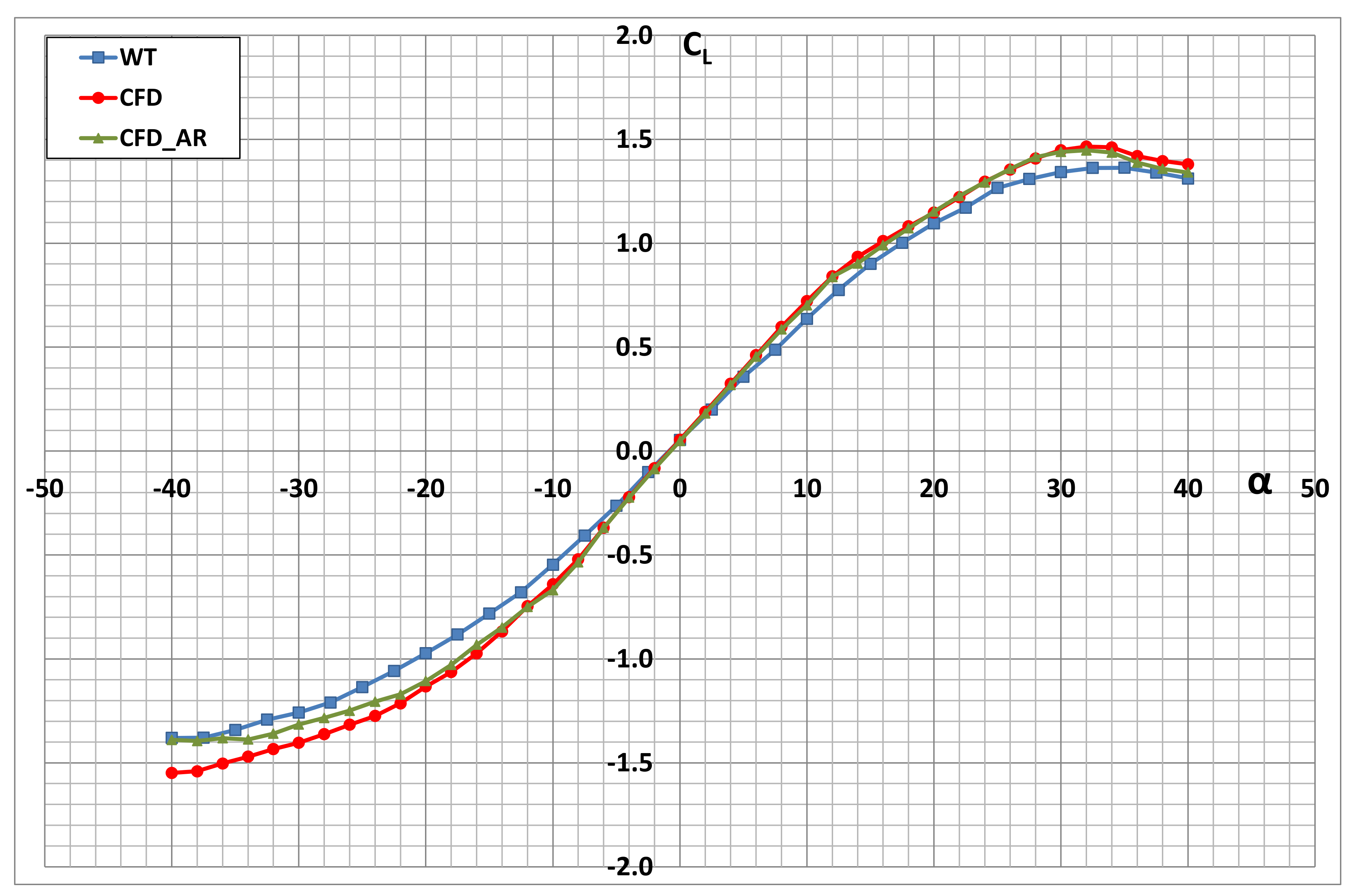
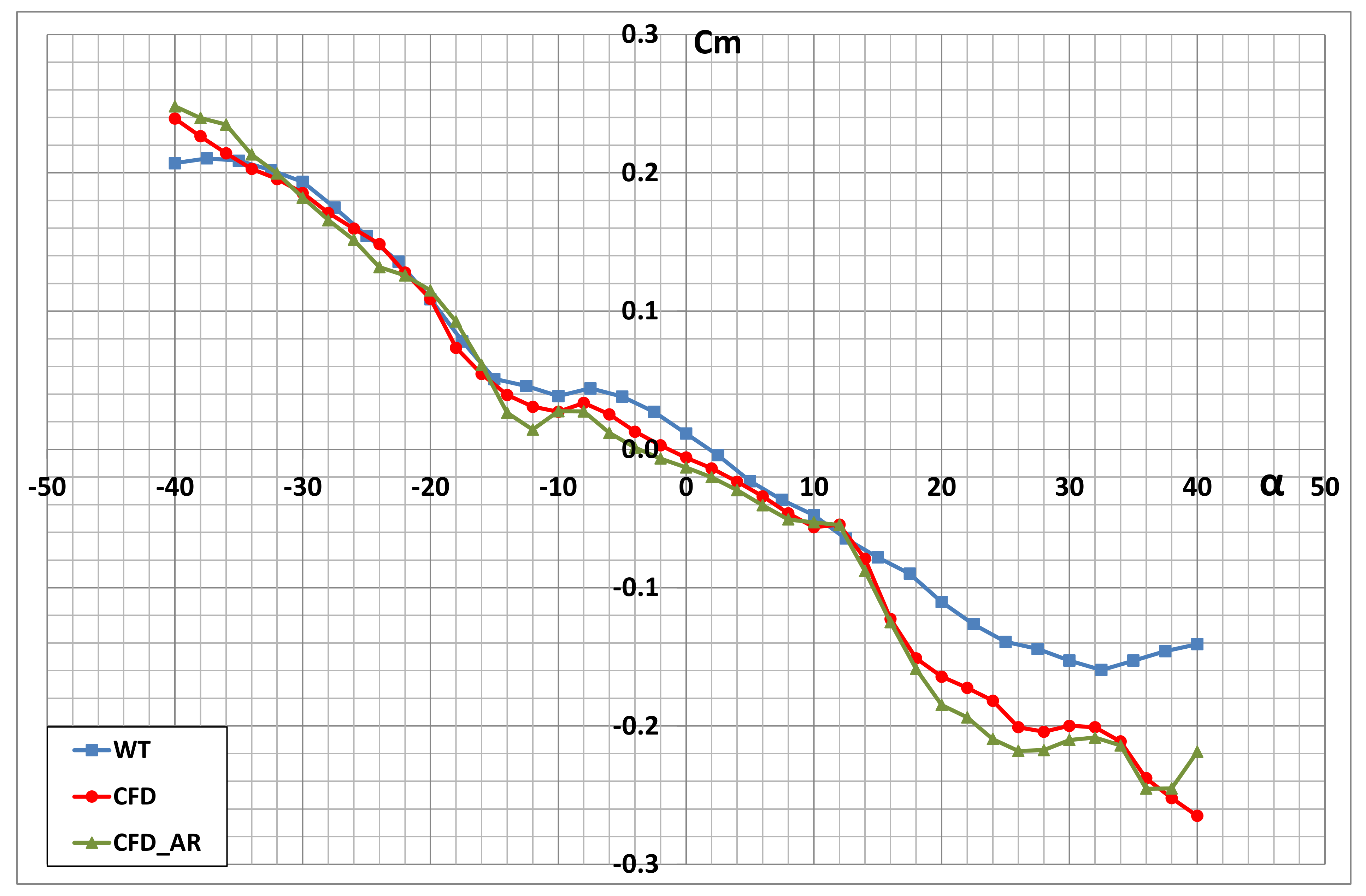




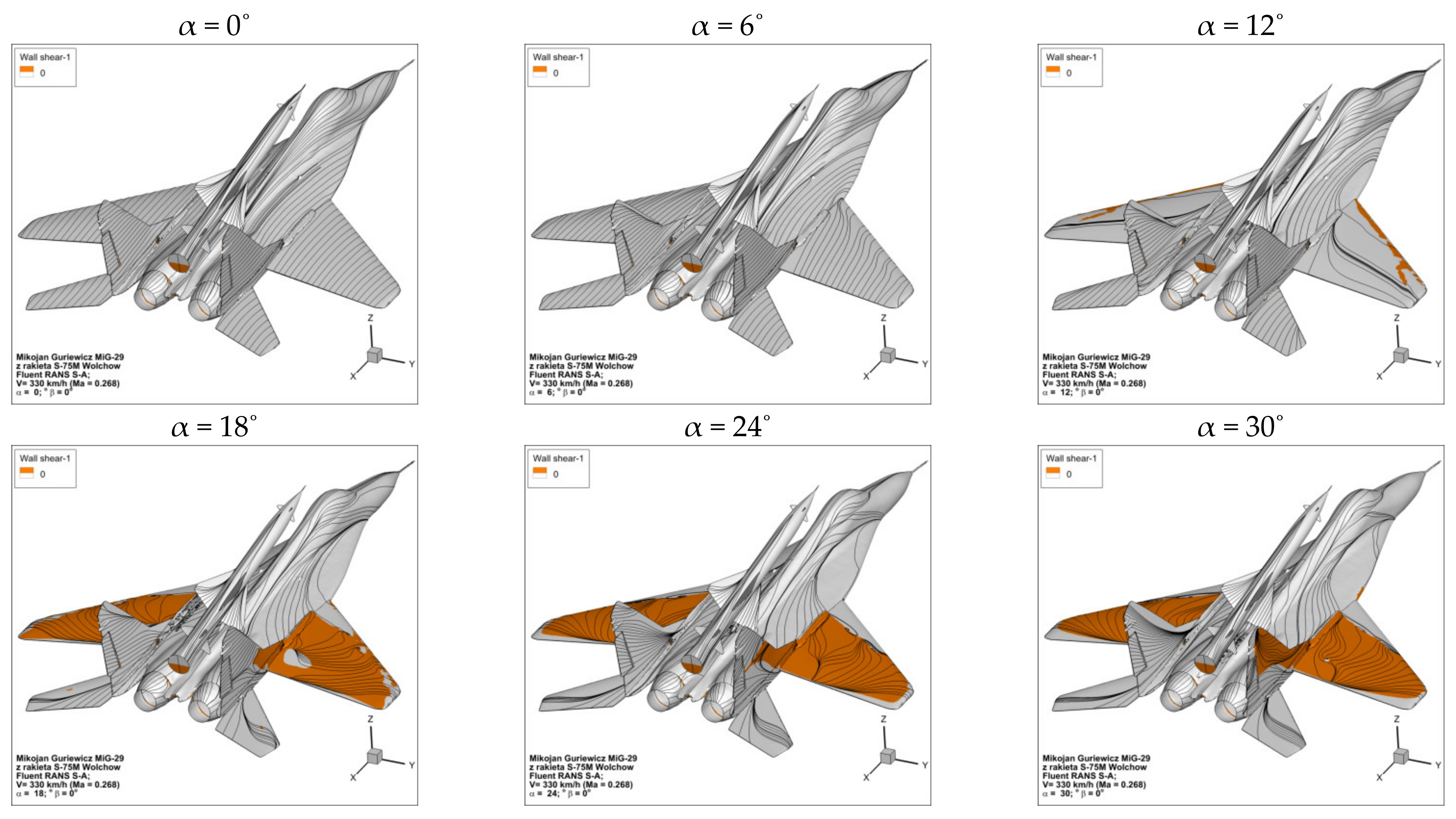






Publisher’s Note: MDPI stays neutral with regard to jurisdictional claims in published maps and institutional affiliations. |
© 2022 by the authors. Licensee MDPI, Basel, Switzerland. This article is an open access article distributed under the terms and conditions of the Creative Commons Attribution (CC BY) license (https://creativecommons.org/licenses/by/4.0/).
Share and Cite
Olejnik, A.; Kiszkowiak, Ł.; Zalewski, P.; Dziubiński, A. Low-Cost Satellite Launch System—Aerodynamic Feasibility Study. Aerospace 2022, 9, 284. https://doi.org/10.3390/aerospace9060284
Olejnik A, Kiszkowiak Ł, Zalewski P, Dziubiński A. Low-Cost Satellite Launch System—Aerodynamic Feasibility Study. Aerospace. 2022; 9(6):284. https://doi.org/10.3390/aerospace9060284
Chicago/Turabian StyleOlejnik, Aleksander, Łukasz Kiszkowiak, Piotr Zalewski, and Adam Dziubiński. 2022. "Low-Cost Satellite Launch System—Aerodynamic Feasibility Study" Aerospace 9, no. 6: 284. https://doi.org/10.3390/aerospace9060284
APA StyleOlejnik, A., Kiszkowiak, Ł., Zalewski, P., & Dziubiński, A. (2022). Low-Cost Satellite Launch System—Aerodynamic Feasibility Study. Aerospace, 9(6), 284. https://doi.org/10.3390/aerospace9060284





